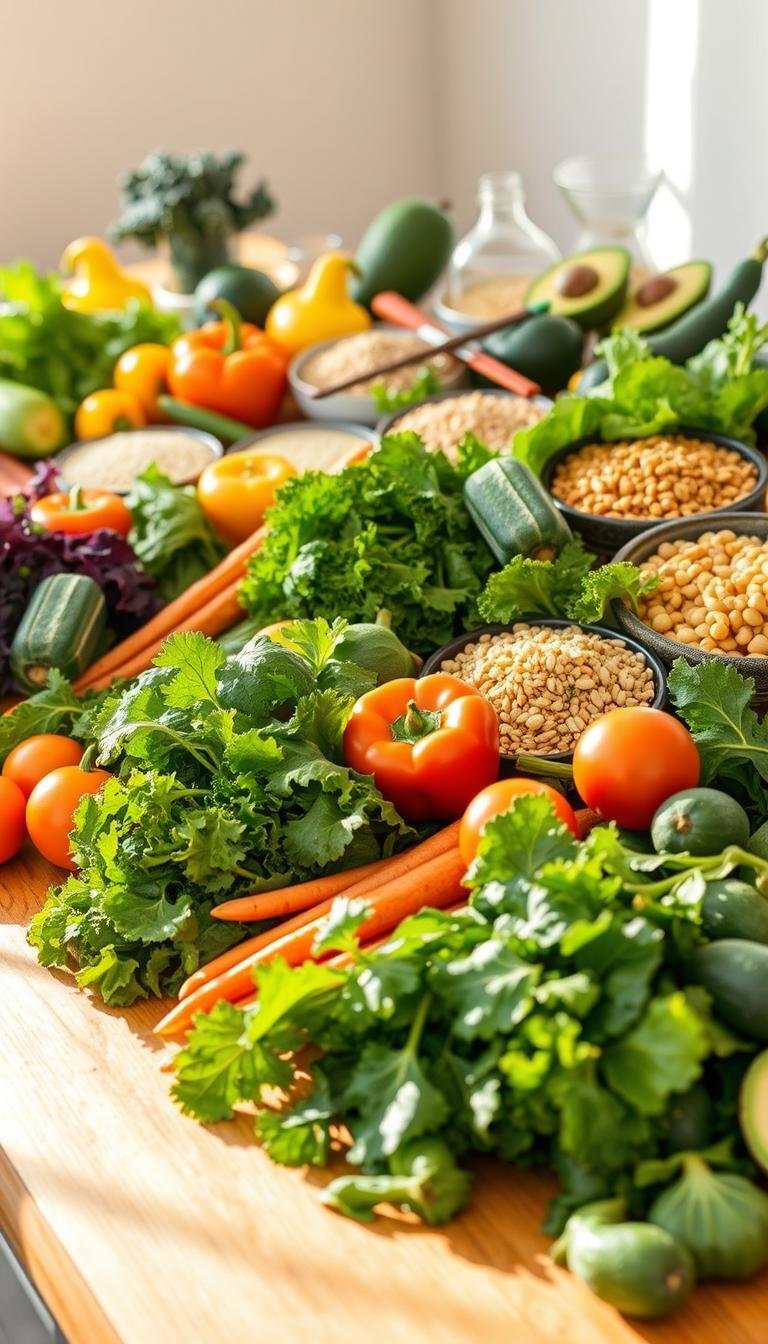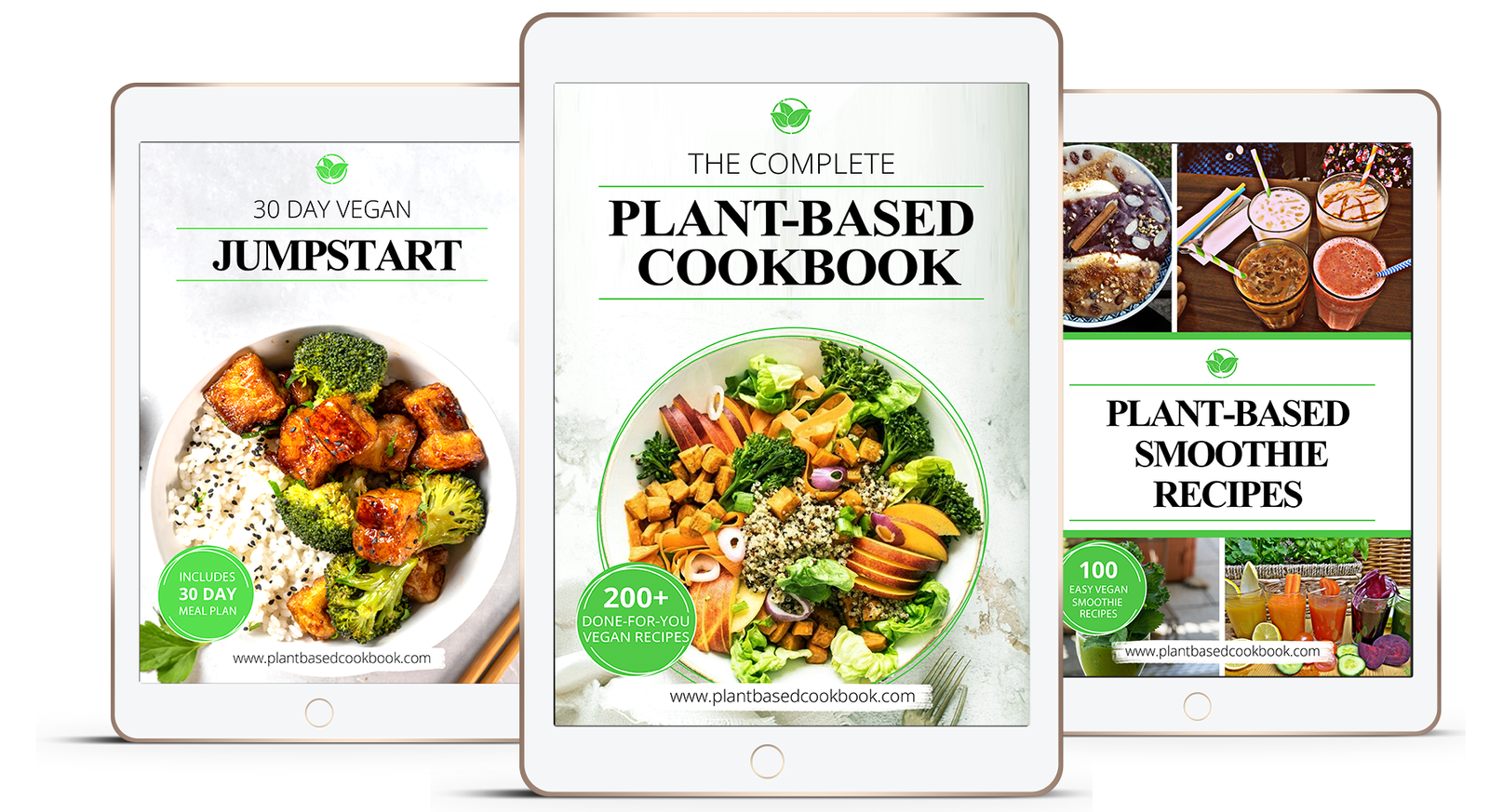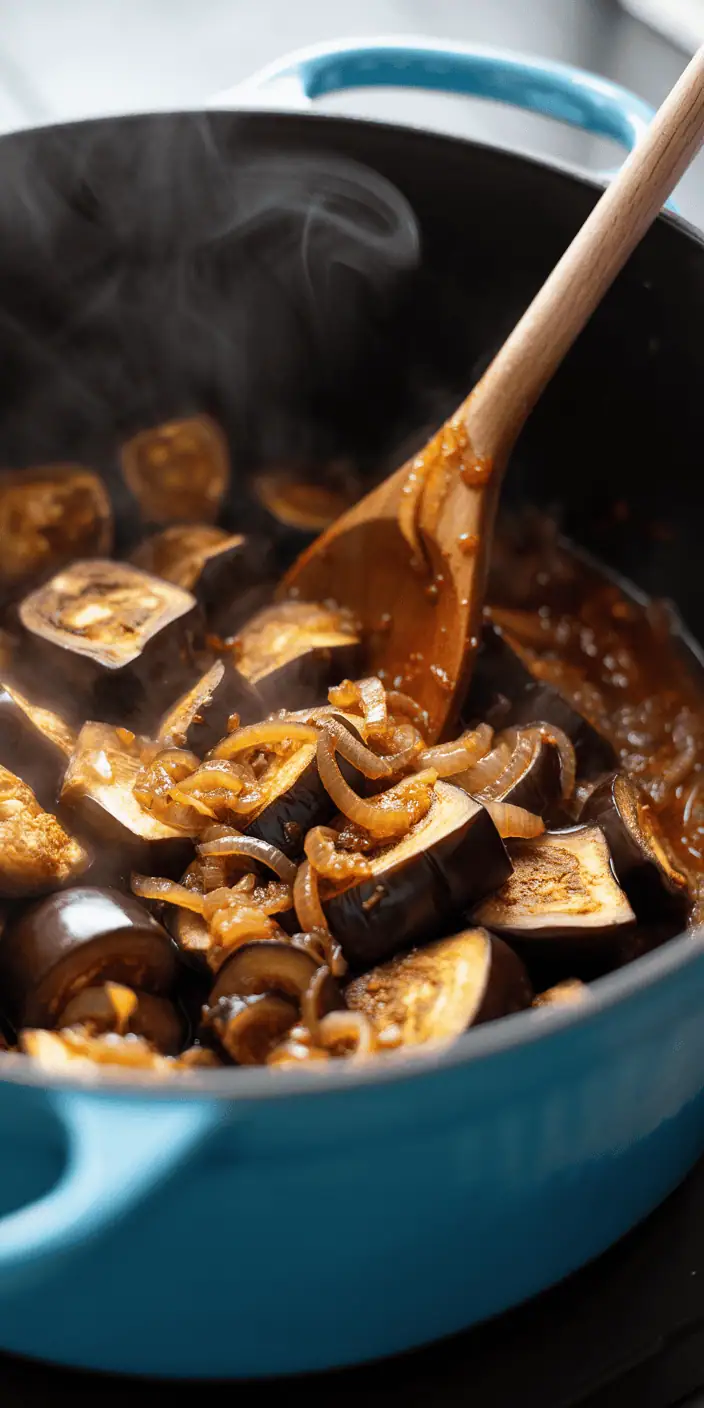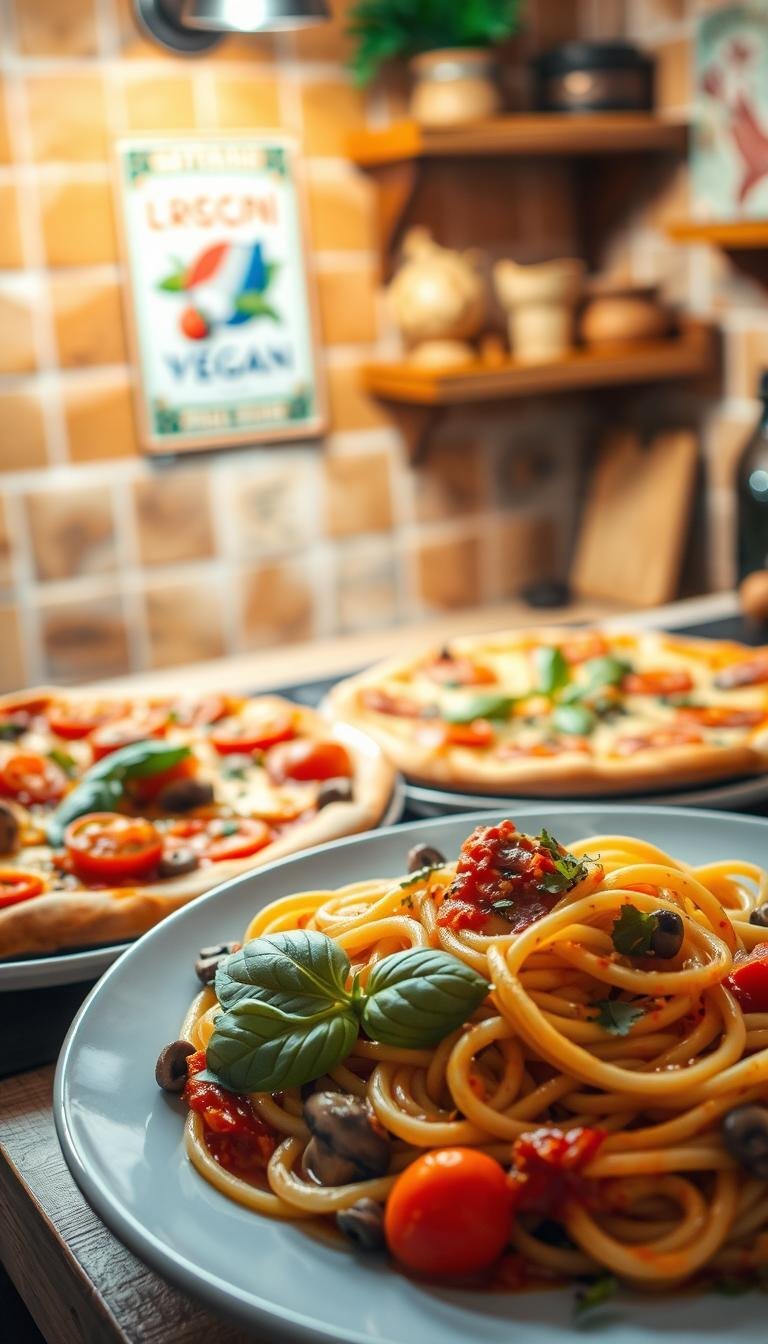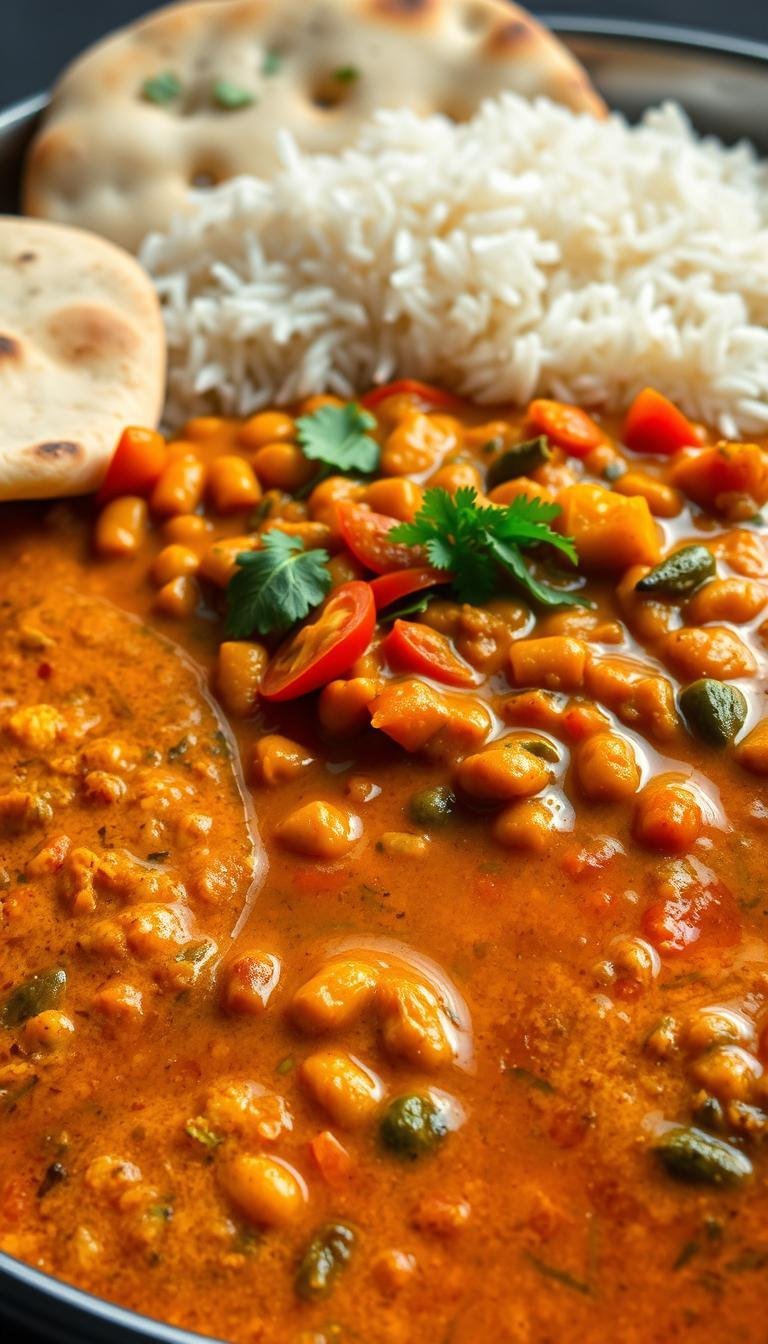(Hey! Some links in this post may be affiliate links — meaning I may earn a small commission if you buy through them, at no extra cost to you. As an Amazon Associate, I earn from qualifying purchases. I only share products I genuinely love and think you’ll find useful too. Read the full disclosure here).
A plant-based diet is great for your health. It can lower your risk of heart disease and type 2 diabetes. It’s a smart choice for a healthier lifestyle.
It’s easy and tasty to follow a plant-based diet with the right meal prep. Eating a variety of whole foods ensures you get all the nutrients you need. With some planning, you can enjoy better health and nutrition.
Meal prepping on a plant-based diet is simple and saves time and money. It’s perfect for vegans and those following a whole foods diet. This article will show you how to meal prep and give you 7 easy recipes to start with.
Contents
- 1 Benefits of a Plant-Based Diet
- 2 Getting Started: Essential Meal Prep Tools
- 3 Planning Your Plant-Based Menu
- 4 Easy Plant-Based Recipes for Meal Prep
- 5 Batch Cooking Tips for Efficiency
- 6 Organizing Your Meals for the Week
- 7 Tips for Sticking to a Plant-Based Diet
- 8 Keeping It Fresh: Storing and Reheating
- 9 Conclusion: Embracing a Plant-Based Lifestyle
Benefits of a Plant-Based Diet
A plant-based diet has many benefits. It improves health and nutrition, lowers environmental impact, and raises ethical concerns. Eating whole, minimally processed foods can lower the risk of chronic diseases and help maintain a healthy weight. The advantages of a plant-based diet are huge, and plant based nutrition is key to overall well-being.
Some key benefits include:
- Reduced risk of heart disease and stroke
- Lower risk of certain types of cancer
- Improved weight management
- Lower environmental impact compared to animal-based diets

Healthy eating is vital for a balanced life. A plant-based diet offers many chances for healthy eating habits. With some planning and creativity, you can enjoy tasty and nutritious plant-based meals. This improves your health and well-being.
Getting Started: Essential Meal Prep Tools
To start your meal prep journey on a plant-based diet, you need the right tools. Having the right equipment makes preparing healthy meals easier and more fun. A well-stocked kitchen is key for plant based recipes.
A slow cooker, blender, and food processor are must-haves. They help you make a variety of meals, from soups to salads. These gadgets save time and make meal prep enjoyable.
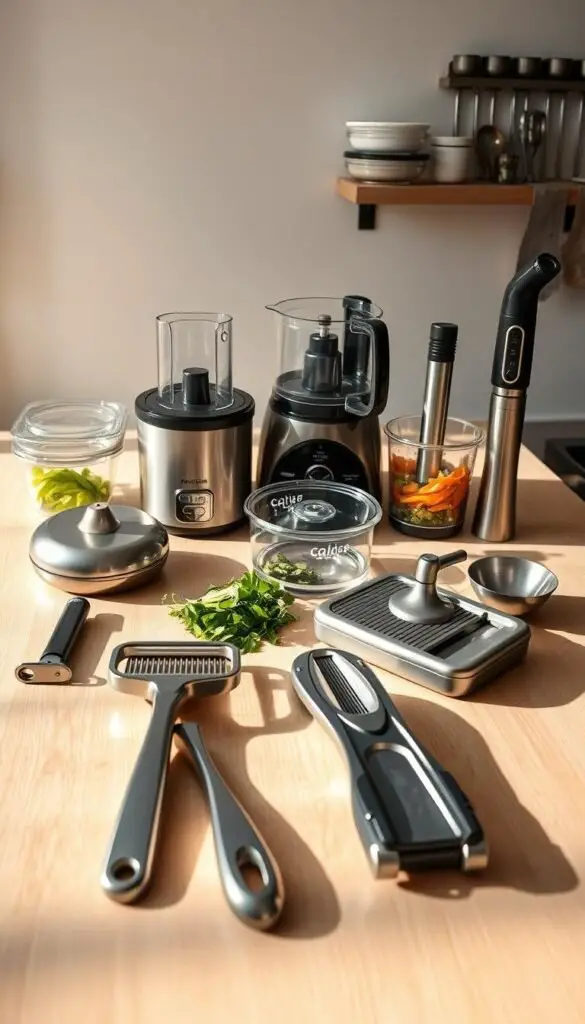
Food storage solutions are also important for meal prep. Glass containers and reusable bags keep meals fresh and organized. They help you transport meals easily and keep them fresh longer.
Other essential tools include sharp knives, a cutting board, and measuring cups. These tools help you prepare meals quickly and efficiently. They improve the quality of your meals. Investing in these tools makes meal prep more enjoyable and helps you reach your health goals.
Planning Your Plant-Based Menu
Starting a plant based lifestyle means planning your meals carefully. A whole foods diet is key for staying healthy. Using seasonal ingredients makes meals taste better and are more nutritious.
When you plan your meals, think about eating foods that are in season. These are usually fresher and taste better. A good menu should have foods from different groups like fruits, veggies, whole grains, and legumes.
Seasonal ingredients help make healthy meals that are also tasty. They also help the planet by reducing food production’s environmental impact. Here are some examples:
- Fresh berries in the summer
- Roasted vegetables in the fall
- Citrus fruits in the winter
- Leafy greens in the spring
Using seasonal ingredients in your plant based lifestyle makes your diet balanced and varied. It’s good for your health and the planet. A whole foods diet with lots of seasonal ingredients gives you all the nutrients you need.

Easy Plant-Based Recipes for Meal Prep
Healthy eating starts with tasty, easy recipes. We’ll look at three simple plant based recipes great for meal prep. They’re not just good for you, but also full of flavor, perfect for a plant-based diet.
For meal prep, having versatile recipes is key. These can be made ahead and warmed up later. Here are three easy plant based recipes to try:
- Quinoa and Black Bean Salad: A hearty salad with quinoa, black beans, and roasted veggies, great for a quick lunch.
- Sweet Potato and Chickpea Bowl: A tasty bowl with roasted sweet potatoes, chickpeas, and tahini sauce.
- Stuffed Bell Peppers: Bell peppers filled with quinoa, black beans, and veggies, baked to perfection.

These plant based recipes are ideal for meal prep. They’re full of nutrients and taste amazing, making them great for a healthy eating plan. Adding these recipes to your meal prep will help you enjoy a balanced and tasty plant-based diet.
Batch Cooking Tips for Efficiency
Batch cooking is a smart way to prepare meals ahead of time. It’s perfect for those who eat plant-based. Cooking big batches saves time and cuts down on waste. It also lets you get creative in the kitchen.
Batch cooking pairs well with one-pot recipes. These recipes are easy to make and clean up. Stir-fries, curries, and chili are great examples. They’re easy to scale up and can be reheated when you need them.
Cooking in Large Quantities
Cooking big batches is key in batch cooking. It lets you make several meals at once. You can store them in the fridge or freezer for later. Tips include using big slow cookers or Instant Pots and prep ingredients ahead.
Using One-Pot Recipes
One-pot recipes make batch cooking even easier. They cook all ingredients in one pot, cutting down on cleanup. Recipes like lentil soup and veggie stir-fry are great for batch cooking. They help you save time and make tasty, healthy meals.
Organizing Your Meals for the Week
Meal planning is all about being organized. It helps save time, cuts down on waste, and makes sure you eat healthy at home. A simple way to start is by making a visual meal plan. Just write down your meals for the week on a calendar or use a meal planning app.
Being organized is key in meal planning. It helps you keep track of your meals, ingredients, and when to cook. Use labels and storage like containers or baskets to stay organized. This way, you can easily see what you have and what you need to buy.
Good meal planning also means thinking about how to store and reheat your food. Storage systems help keep your meals fresh all week. Use airtight containers, label them with dates and what’s inside, and store them in a cool, dry place.
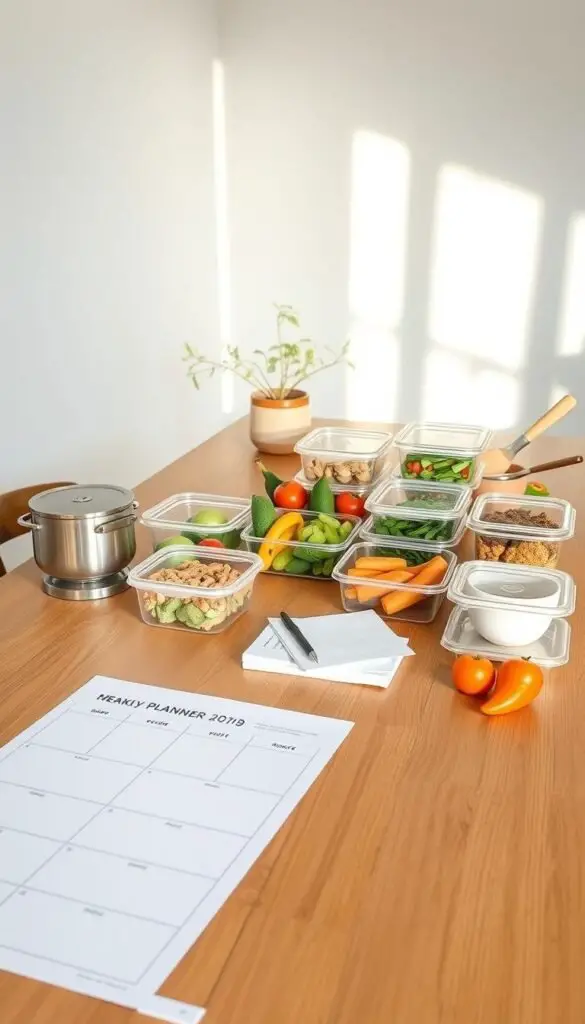
- Plan meals around seasonal ingredients for freshness and variety
- Use a meal planning app to make planning easier
- Prep meals ahead of time to save week-day time
- Label and store meals right to keep them fresh and organized
By using these strategies, you can make meal planning easier and less stressful. It saves time and reduces waste. Good meal planning and organization can greatly improve your health and wellbeing. With the right tools and strategies, you can enjoy tasty, home-cooked meals all week.
Tips for Sticking to a Plant-Based Diet
Starting a plant-based lifestyle is rewarding but needs commitment. To stay on track, having the right tips is key. Overcoming cravings and social pressures is a big challenge. Planning and preparing ahead helps overcome these hurdles.
It’s also important to stay inspired on a plant-based diet. Trying new recipes keeps things interesting. Exploring cuisines like Indian or Middle Eastern adds variety. Following plant-based bloggers or influencers also brings new ideas.

- Meal planning and preparation
- Exploring new recipes and cuisines
- Finding plant-based alternatives to favorite foods
- Connecting with others who follow a plant-based diet
By using thesetipsand staying inspired, you can keep a healthyplant-based lifestyle. Enjoy the many benefits it offers.
Keeping It Fresh: Storing and Reheating
Keeping your meals fresh and safe is key. Use airtight containers to stop contamination and spoilage. It’s also smart to label and date your meals. This helps you use the oldest items first.
Safe reheating is important to avoid foodborne illness. You can use the microwave or oven, but follow some rules. Cover your food with a microwave-safe lid or plastic wrap to avoid splatters. In the oven, use a food thermometer to check the food’s temperature.

- Storing meals in the refrigerator at a temperature of 40°F (4°C) or below
- Freezing meals at 0°F (-18°C) or below to prevent the growth of harmful bacteria
- Using shallow containers to cool meals quickly and prevent bacterial growth
By following these tips, your meals will stay fresh and safe. Always put food safety first when storing and reheating. Enjoy the ease and benefits of meal prep with confidence.
Conclusion: Embracing a Plant-Based Lifestyle
Starting your plant-based journey is exciting. You’ll enjoy better health and nutrition. Plus, you’ll help the planet and discover tasty new foods.
It might seem hard at first, but it’s worth it. With the right help, you’ll find it rewarding. Meal prep makes it easier over time.
As you stick with it, you’ll feel more energetic. You’ll also lower your risk of serious diseases. And you’ll feel closer to nature.
So, take the first step towards a better future. Let this article guide you. Discover the joys of living a plant-based life.

